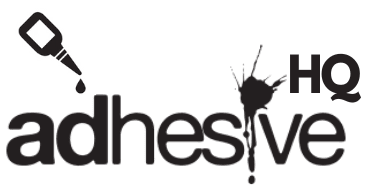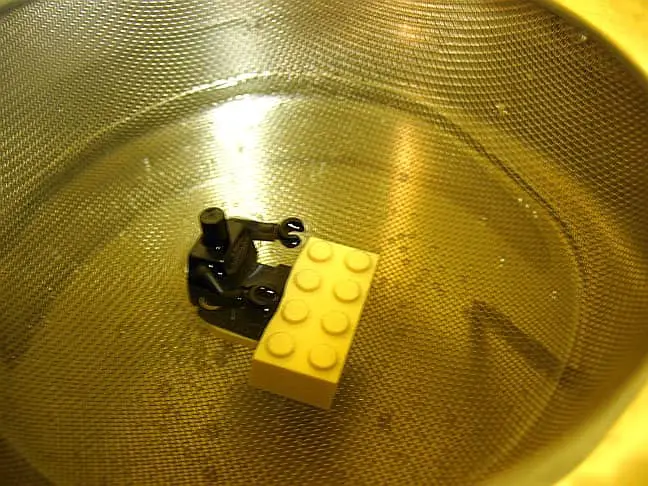CA Glue vs Super Glue
Introducing the bonding power of the future – CA Glue and Super Glue! These adhesives are the superheroes of the adhesive world, delivering a quick and permanent hold for all your repair and crafting needs. Whether it’s fixing a broken vase, attaching a picture frame, or building a model, CA Glue and Super Glue have got you covered. Their fast-drying formula and strong bond make them the go-to choice for DIY enthusiasts, hobbyists, and professionals alike. So, grab your bottle of CA Glue or Super Glue and experience the power of a flawless bond today!
CA Glue and Super Glue are not just any ordinary adhesives, they are a game-changer in the world of bonding. These versatile products can bond almost anything, from plastic to wood, metal to ceramic, and even porous surfaces. Whether you need to fix a small crack or want to glue a large project together, CA Glue and Super Glue are the perfect solution.
Their fast-drying formula and quick-bonding capabilities make them ideal for projects where speed is of the essence. And, once applied, the bond created by CA Glue and Super Glue is incredibly strong and durable, ensuring that your project will stay together for a long time.
What sets CA Glue and Super Glue apart from other adhesives is their versatility. They come in different formulas and viscosities, so you can choose the perfect product for your specific project. For example, thin CA Glue is perfect for intricate work, while thick CA Glue is great for bonding large and heavy items.
So, whether you’re a DIY enthusiast, a hobbyist, or a professional, CA Glue and Super Glue should be a staple in your toolkit. They are the perfect solution for all your bonding needs, delivering a strong and permanent bond every time. So, go ahead and get your bottle of CA Glue or Super Glue today, and experience the power of a flawless bond for yourself!
Differences between CA Glue And Super Glue
CA Glue and Super Glue are both fast-drying adhesives that are commonly used for a wide range of applications. However, there are some key differences between these two adhesives.
- Chemical Composition: CA Glue (Cyanoacrylate Adhesive) is a type of fast-drying, strong bonding adhesive made from cyanoacrylate monomers. Super Glue, on the other hand, is a general term used to describe fast-drying adhesives that can be made from a variety of different chemical compounds, including cyanoacrylate.
- Viscosity: CA Glue is available in a variety of viscosities, ranging from thin to thick. Thin CA Glue is ideal for intricate work, while thick CA Glue is better for bonding large and heavy items. Super Glue, on the other hand, is typically available in a single, medium viscosity.
- Drying Time: CA Glue and Super Glue both have a fast-drying time, but CA Glue tends to dry faster. This makes it the preferred choice for projects where speed is of the essence.
- Bond Strength: Both CA Glue and Super Glue create strong bonds, but CA Glue is typically considered to have a stronger bond. This is because the chemical composition of CA Glue allows it to form a more permanent bond than other types of fast-drying adhesives.
- Surface Compatibility: CA Glue is compatible with a wide range of surfaces, including plastic, wood, metal, and ceramic. Super Glue, on the other hand, may not be compatible with certain types of materials, such as silicone or certain plastics.
Is CA glue and Super Glue the same?
No, CA glue (Cyanoacrylate Adhesive) and Super Glue are not exactly the same, although they are often used interchangeably. Super Glue is a general term used to describe fast-drying adhesives, while CA glue specifically refers to adhesives made from cyanoacrylate monomers. CA glue is known for its fast-drying time and strong bond, making it a popular choice for a variety of applications. However, not all adhesives referred to as “Super Glue” are made from cyanoacrylate and may have different properties and uses.
Tips on Using CA or Super Glue
Here are some tips for using CA glue or Super Glue:
- Clean Surfaces: Make sure the surfaces you want to bond are clean and free of dirt, dust, or grease, as this will ensure a strong bond.
- Precise Application: When applying CA glue or Super Glue, use a precise and controlled application to avoid getting it on your skin or clothing.
- Clamping: For large or heavy items, clamping may be necessary to hold the pieces together while the adhesive dries.
- Thin vs. Thick Glue: Choose the right viscosity of CA glue or Super Glue for your project. Thin CA glue is better for intricate work, while thick CA glue is better for bonding larger items.
- Accelerators: For quicker bonding, you can use a CA glue accelerator spray, which will speed up the drying time.
- Drying Time: Allow sufficient time for the glue to dry completely before handling the bonded item. The drying time will vary depending on the type of glue and the temperature and humidity conditions.
- Removing Excess Glue: If you get CA glue or Super Glue on your skin or clothing, use acetone or nail polish remover to remove it.
- Storage: Store CA glue or Super Glue in a cool, dry place and replace the cap securely after each use to prevent the glue from drying out.
By following these tips, you can ensure a successful and safe use of CA glue or Super Glue for your projects.
Is Gorilla Super Glue the same as CA glue?
Gorilla Super Glue is not the same as CA glue, although it is a type of fast-drying adhesive. Gorilla Super Glue is specifically made from a type of chemical called Ethyl Cyanoacrylate, which is similar to the chemicals used in CA glue. However, Gorilla Super Glue is known for its high strength and versatility, making it a popular choice for a wide range of applications. Like CA glue, Gorilla Super Glue dries quickly and creates a strong bond, but it may have slightly different properties and uses compared to CA glue.
What glue is stronger than Super Glue?
There are several adhesives that are stronger than Super Glue, including:
- Epoxy: Epoxy is a two-part adhesive that is known for its high strength and durability. It is ideal for bonding metal, wood, glass, ceramics, and plastic.
- Structural Adhesives: Structural adhesives, also known as Engineering Adhesives, are a type of adhesive that is designed for high-stress applications. They are often used in the construction and manufacturing industries.
- Polyurethane (PU) Adhesives: PU adhesives are known for their high strength, flexibility, and resistance to water and heat. They are ideal for bonding wood, metal, plastic, and other materials.
- Two-part Acrylic Adhesives: Two-part acrylic adhesives are a type of fast-curing adhesive that creates a strong bond. They are often used in the automotive and electronics industries.
- Welding: Welding is a process that uses heat and pressure to bond metal parts together, creating a permanent bond that is stronger than any type of adhesive.
It is important to note that the choice of adhesive will depend on the specific application and the materials being bonded. For some applications, a strong adhesive may not be the only consideration, as other factors such as heat resistance, flexibility, or cure time may also be important.
Conclusion
In conclusion, CA glue and Super Glue are fast-drying adhesives that are commonly used for a wide range of applications. While CA glue specifically refers to adhesives made from cyanoacrylate monomers, Super Glue is a general term used to describe fast-drying adhesives. Both CA glue and Super Glue are known for their fast-drying time and strong bond, but they may have slightly different properties and uses.
It is important to choose the right type of adhesive for your specific application, taking into account factors such as the materials being bonded, curing time, and strength requirements. In general, CA glue and Super Glue are versatile adhesives that can be used for a variety of projects, but it is important to use them safely and follow the manufacturer’s instructions to ensure a successful and safe bonding experience.

